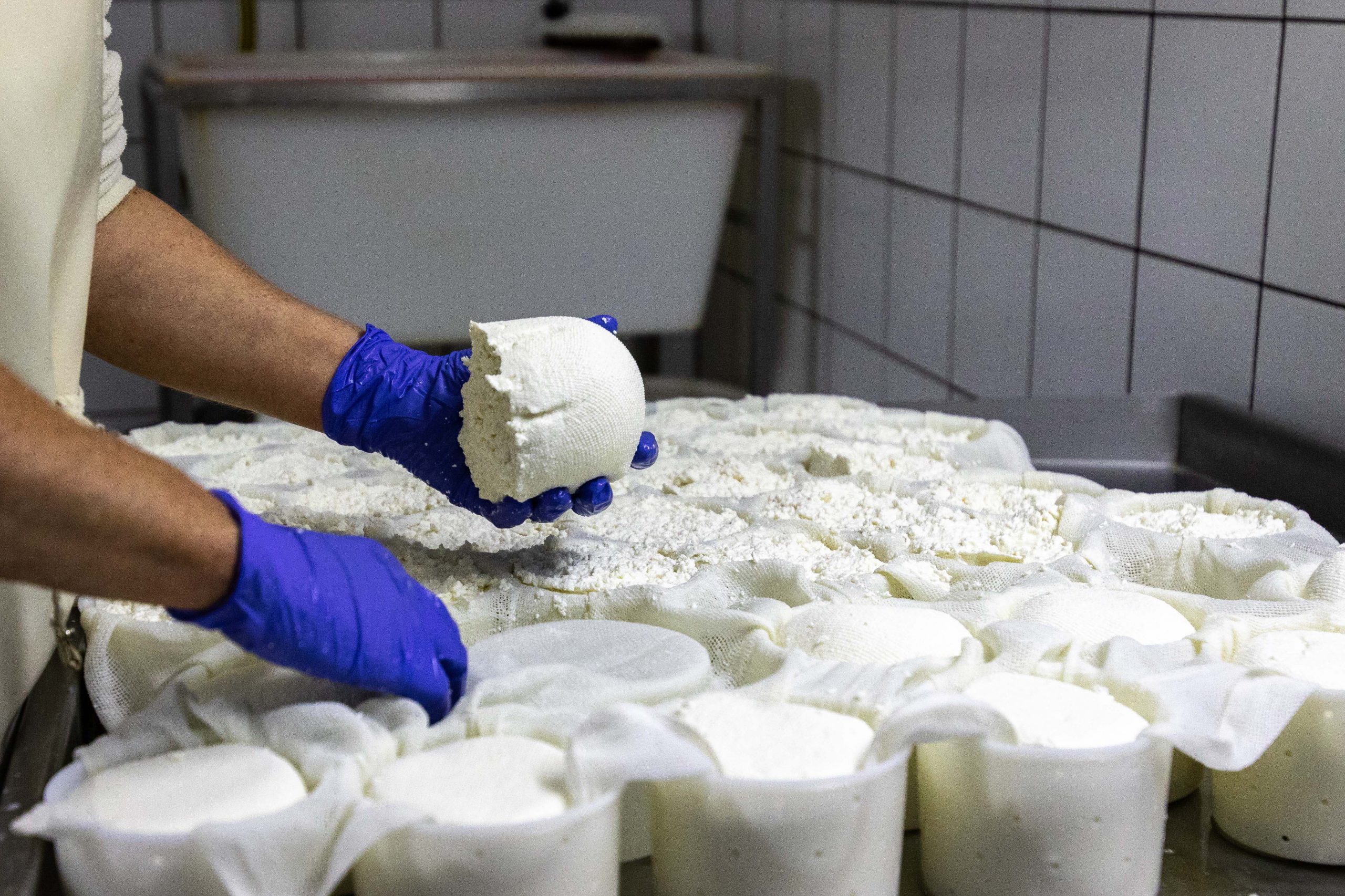
What is
a PDO?
PDO, an official European label
This label, identified by its red and gold logo, can only be awarded by public authorities and solely through a collective approach by producers organised into a federal structure known as Organisme de Défense et de Gestion (ODG – Defence and Management Body).
The concept of the Appellation d’Origine (Designation of Origin) was introduced to tackle fraud (1905 law). In 1935 it became the Appellation d’Origine Contrôlée (AOC – Controlled Designation of Origin) and was extended to cover all agricultural and food products in 1990.
Since 1 May 2009, the label has become Europe-wide and is known as: Appellation d’Origine Protégée (AOP)/Protected Designation of Origin (PDO). The European PDO logo guarantees that every step of the product’s preparation (milk production, turning milk into butter, cream or cheese and then maturing it) is carried out in a set geographic area corresponding to the product’s region of origin, and using recognised techniques and particular specifications inspected by public authorities and independent third-party bodies.
CDO = PDO
Controlled Designation of Origin: C stands for Controlled, meaning checked by the INAO (France’s national institute checking origin and quality)
Protected Designation of Origin: P stands for Protected by the European Union,
The PDO can only be awarded after an inspection by both of these authorities.
Since 2012, once cheeses, butters and creams have been registered at European level, they will only bear a mention of the PDO along with the yellow and gold European level. Only wines are permitted to keep the CDO (decree of 1 January 2012).
In France, 46 cheeses, 3 butters and 2 creams have Protected Designation of Origin (PDO) status, out of a total of almost 280 products in Europe.
To find out more, all the geographic details for Europe and the rest of the World are listed in the database at https://www.tmdn.org/giview/
A guarantee of origin and quality
Guarantee of Origin
The PDO gives consumers the guarantee that all stages of production took place in the geographic area covered by the designation of origin, from milk production to cheese maturing.
Products that have this status derive their authenticity and distinctiveness from this geographic origin, which includes natural and human factors.
Therefore, by definition, PDOs are products that come 100% from their region and cannot be relocated!
Transparency
The geographic area and production conditions for each PDO are listed in specifications that are validated by the State and the European Union. Consumers can view this information at www.inao.gouv.fr with complete transparency.
Collective know-how
The PDO is official recognition of collective know-how. No secret recipes, no unknown ingredients: a PDO recognises that a product whose distinctiveness derives from collective tangible or intangible know-how that is shared by all operators working to specifications.
Inspection mechanism
In addition to the inspections that are common to the whole dairy sector, operators working to a PDO must comply with 3 levels of checks in order to give consumers a guarantee of conformity with the specifications:
- Self-checks: milk producers, processors and refiners must record their practices, ensure traceability and comply with specifications.
- Internal inspections: internal inspections are conducted by the PDO Defence and Management Bodies (ODG) and are part of a process for promoting and supporting operators to continue improving their practices.
- External inspections: external inspections guarantee the transparency and credibility of any inspection mechanism. They are conducted by independent certifying bodies that hold accreditation from COFRAC and public authorities.
The whole mechanism is overseen by the Institut National de l’Origine et de la Qualité (National Institute for Origin and Quality, INAO) and the European Commission. In 2012, 6,256 inspections were conducted on milk and cheese producers involved in PDO processes.
In addition, products are sampled by organoleptic commissions to check that tastes and sensory profiles conform to the criteria needed to gain the designation of origin. In 2012, 2,710 samples of PDO cheese, butter and cream underwent critical tasting.

